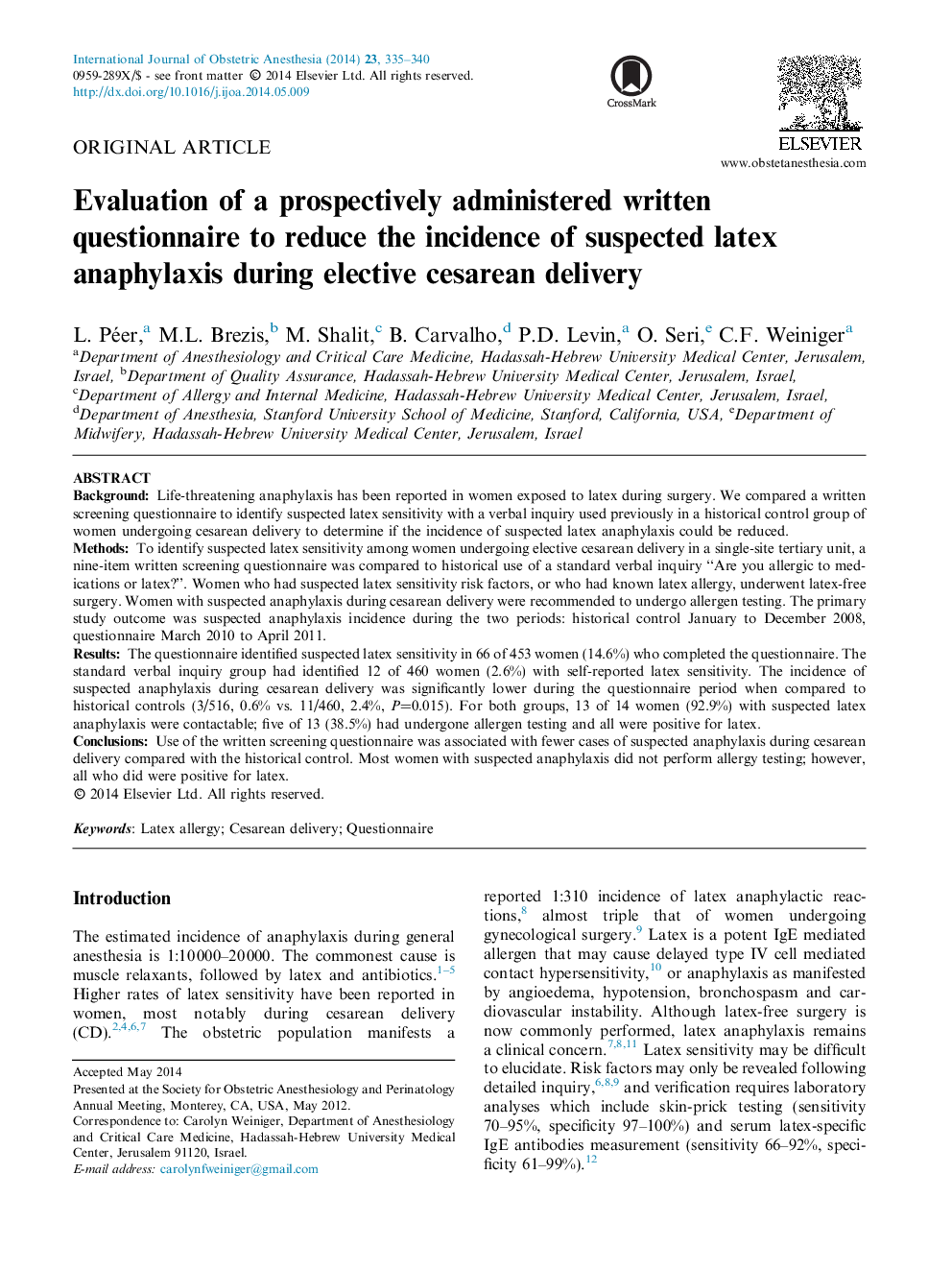| Article ID | Journal | Published Year | Pages | File Type |
|---|---|---|---|---|
| 2757694 | International Journal of Obstetric Anesthesia | 2014 | 6 Pages |
•A written screening questionnaire identified potential latex sensitivity pre-cesarean delivery.•A historical control received standard verbal latex allergy inquiry.•The questionnaire reduced suspected anaphylaxis rate during cesarean delivery.•Latex as the anaphylaxis culprit was challenging to confirm.•Postpartum women avoided allergy testing despite experiencing suspected anaphylaxis.
BackgroundLife-threatening anaphylaxis has been reported in women exposed to latex during surgery. We compared a written screening questionnaire to identify suspected latex sensitivity with a verbal inquiry used previously in a historical control group of women undergoing cesarean delivery to determine if the incidence of suspected latex anaphylaxis could be reduced.MethodsTo identify suspected latex sensitivity among women undergoing elective cesarean delivery in a single-site tertiary unit, a nine-item written screening questionnaire was compared to historical use of a standard verbal inquiry “Are you allergic to medications or latex?”. Women who had suspected latex sensitivity risk factors, or who had known latex allergy, underwent latex-free surgery. Women with suspected anaphylaxis during cesarean delivery were recommended to undergo allergen testing. The primary study outcome was suspected anaphylaxis incidence during the two periods: historical control January to December 2008, questionnaire March 2010 to April 2011.ResultsThe questionnaire identified suspected latex sensitivity in 66 of 453 women (14.6%) who completed the questionnaire. The standard verbal inquiry group had identified 12 of 460 women (2.6%) with self-reported latex sensitivity. The incidence of suspected anaphylaxis during cesarean delivery was significantly lower during the questionnaire period when compared to historical controls (3/516, 0.6% vs. 11/460, 2.4%, P=0.015). For both groups, 13 of 14 women (92.9%) with suspected latex anaphylaxis were contactable; five of 13 (38.5%) had undergone allergen testing and all were positive for latex.ConclusionsUse of the written screening questionnaire was associated with fewer cases of suspected anaphylaxis during cesarean delivery compared with the historical control. Most women with suspected anaphylaxis did not perform allergy testing; however, all who did were positive for latex.
